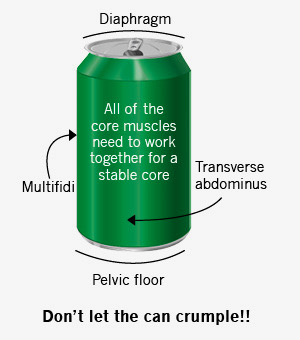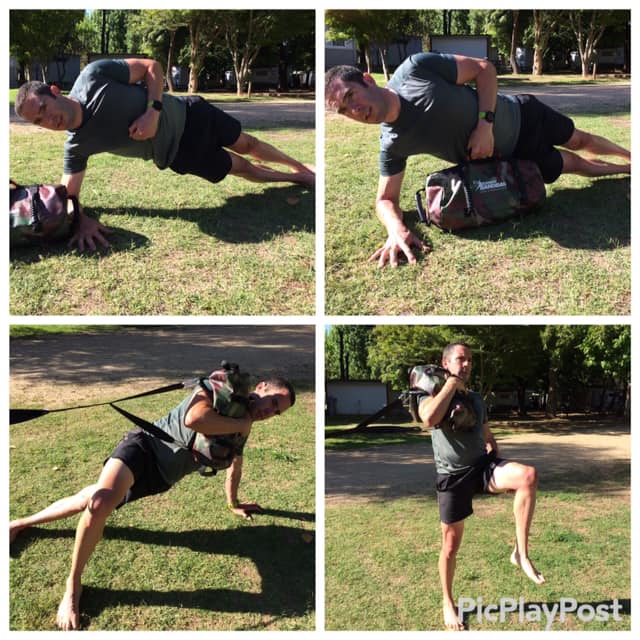Why This Needs To Be Your Foundation of Strength
2020-01-12
It almost seems universal, when you have trained people as long as I have, you start to see some very common themes that you know cover almost every fitness goal. It doesn’t matter if it is about you wanting to lose body fat, gain strength in certain lifts, or perform well at your favorite sport, there is no denying that having better pelvic control is key.
Why your pelvis? At first glance it doesn’t seem like the sexiest concept to discuss in training, but it very well can be the most important. That is because your ability to control your pelvis relates to every fitness goal, including how to be more injury resilient. Why? Think of your pelvis as the concrete foundation of a building. If it isn’t strong the building can’t be very strong and can’t be built very high, your body is much of the same.

Now, before I get into what you should be thinking about with your pelvic control training, what does it look like when you don’t have good pelvic control? We see it in many forms all the time! In the gym it can be letting the ribs get big when you do a press overhead, it could be the pelvis dropping forward on a row, it could be the “butt wink” on the squat, lack of pelvic control shows its face in many ways. However, what happens outside of the gym may be even more profound!
As I have written many times on our blog, walking is our primary human movement. Before technology, we would walk more than we would squat, hinge, press, pull, etc. In fact, it is what makes us uniquely human. However, just because we can walk from point A to point B doesn’t mean we do it well. Just like we can perform a deadlift with a horribly rounded back, or squat with knees caving in doesn’t mean that is good!
In terms of walking there are MANY things to watch because walking is more complex than any of the actions we perform in the gym. That also means we can see a lot of compensations occur during walking. Like what? Our hips can overly rotate, the feet can strike the ground incorrectly causing change in knee angles, our hips can excessively move from side to side, and so much more. If that sounds overwhelming let me tell you, if you are compensating in movements in the gym, we can almost be 100% sure you are doing so out of it as well!
Great, so where do you start?
We Start, But Don’t Live On The Ground
In the past few posts I have written about ground work we do in DVRT to help pelvic control. Whether it is to perform a better kettlebell swing, or help chronic low back issues. The ground is the MOST stable environment we can be in, so if we see compensations in our ground work we are DEFINITELY going to see it in more complex environments like standing and moving.
Physical Therapist, Dan Swinscoe shows how we use the Ultimate Sandbag to make foundational core exercises like dead bugs better for pelvic control.
What Megan Berner of Fitness Lying Down shows, is how what we learn from the ground needs to be carried over to what we do standing and moving. That is probably one of the biggest faults in people’s strength training is that they do an exercise to make a muscle strong, but because they don’t realize how the body is connected, they don’t have carry over to other movements. The strength we just tried to build in isolating a muscle has so little transfer to actually making our body better, unless we use methods of strength that teach our body movement lessons that we will build upon over time!
Yes, we use the ground to teach foundational strength and pelvic control ideas, but we don’t want our training to exist largely on the ground. Drills like our dead bugs, bird dogs, planks, and side planks, are key in setting the right foundation to use these principles of strength in more challenging ways.

Pelvic control isn’t about one muscle but how all of them work together
Can’t Just Be Up and Down
Just like using the ground is a good foundation of strength, it must be progressed to get to the really good aspects of strength training. The same can be said about how we move in more functional ways. If we look at most strength training programs they are largely what is known as sagittal plane based. That means they have us moving up and down as well as back and forth. Think of your most familiar strength exercises like deadlifts, squats, push-ups, bench press, rows, pull-ups, kettlebell swings, those are ALL almost completely sagittally plane based. Is that bad?
Initially no! You just saw above how Megan started the path of using the plank concept for strength outside of JUST planking and now DVRT Master, Cory Cripe continues it in more dynamic drills.
https://www.instagram.com/tv/B2UqpWnnFHs/
Establishing that really strong foundation of strength has many layers and each one is an opportunity to reinforce concepts of good movement. That is if we are aware of what those opportunities actually look like! The point is that not everything should be up and down because our core actually is meant to keep our pelvic control in 3 planes of motion. The true goal of the core and pelvis is to provide that strong foundation for our arms and legs to “communicate” and prevent unwanted motion (the key element to true stability training). This comes in many forms but Cory explains some really simple, not easy, ways we can see these concepts come to life.
https://www.instagram.com/tv/B03_9prHvVL/
You see our Shoulder Squat is a progression of a side plank. We know that a side plank is designed to help strengthen the lateral chain of our body, but what does THAT matter? When we can’t be strong in resisting lateral motion our body creates all sorts of “energy leaks”. What is THAT?! It is basically where two things happen at the same time. We have our body unable to have that strong foundation so it has to work MUCH harder (not in a good way) to perform the same movement and when it does so it starts to load the wrong structure of our body. The result is exercises we don’t get much out of in terms of results and we start to have more issues in parts of our body like our knees, low backs, and shoulders!
https://www.instagram.com/tv/B7CJn6jHp9t/
This doesn’t JUST mean we do this for squats and lower body exercises. What Cory demonstrates above is how we take upper body strength and make it more multi-dimensional as well. When we do you realize how important the strength of our pelvic control is and how so many of our issues, plateaus, and frustrations can be traced back to how well we developed our pelvic control. It isn’t about the exercise, but it IS about what the exercise is designed to teach our bodies about movement.
Save 25% off some of our top online courses that discuss the concepts we touch on in this blog!
DVRT Level I, Restoration, and our COMPLETE L.I.F.T Programs! Receive a free Ultimate Sandbag with purchase of DVRT Restoration or DVRT Level I. Receive a Total Gym with purchase of the COMPLETE L.I.F.T Certification! USE COUPON CODE “EDUCATION2020”
*free Ultimate Sandbags applicable for only domestic customers, excludes all international customers as well as AK and HI. Sand systems only.

© 2025 Ultimate Sandbag Training. Site by Jennifer Web Design.







